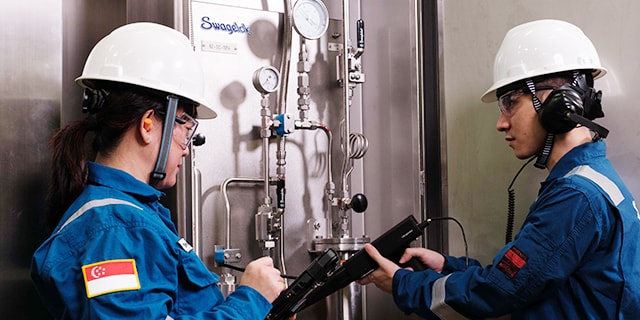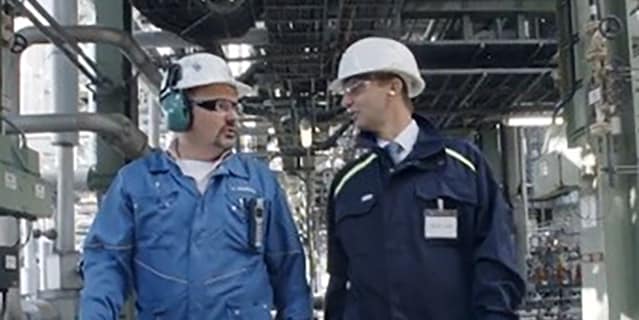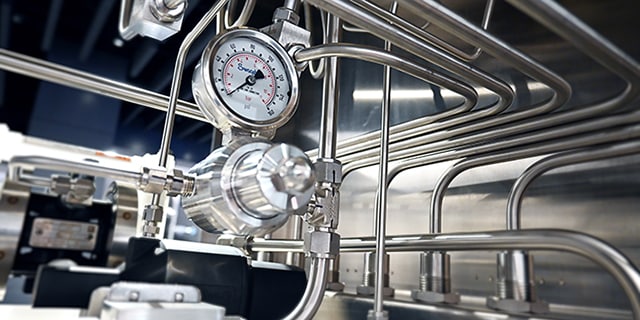How Training Can Minimize Risk on Oil and Gas Platforms

How Training Can Minimize Risk on Oil and Gas Platforms

Health and safety are paramount in the oil and gas industry, and operators in my territory know this only too well. The North Sea, home to significant oil and gas reserves, has been at the forefront of the UK oil and gas industry for over 50 years. While the industry has not been free from accidents and incidents, strict adherence to proven best practices, carried out by well-trained crews, can help to minimize their occurrence today and in the future.
For oil and gas operators, ensuring the competency of personnel and investing in training are a necessity. Studies show that hydrocarbon releases (or HCR) account for upward of 40% of dangerous reported incidents annually.1 It has also been estimated that 50–70% of HCR incidents have causes linked in part or in whole to human factors.2
What are some of those human factors? This article will explore a few commonly observed practices that can occur when working with small bore tubing systems found on many oil and gas installations around the world. We’ll also detail how those issues can be avoided if company and contractor personnel have regularly received the proper training.
Leak-related accident prevention. On oil and gas installations, leaks represent one of the most critical potential safety hazards. Small bore tubing (SBT) system inspections performed by the Health and Safety Executive (HSE) have consistently found that about 26% of fittings contain faults—a number that has remained constant since 2001.3 These faults are related to under-tightness, incorrect or mismatched components, leaks, or incorrect installation.
Fluid systems often carry hazardous substances that have the potential to cause harm to personnel—and these types of faults can represent a risk that can be eliminated with training.
A good small bore tubing training course will take an engineer through the proper procedures required to make a secure, tight fitting. For example, a seasoned maintenance technician may be in the habit of tightening fittings by feel, but this is not adequate measure of tube fitting tightness and can lead to performance issues. Good, regular training—whether for personnel new to fluid system applications or veteran technicians—can provide the latest information on best practices and techniques to ensure critical connections are made and system safety is maintained.
Pressure-related accident prevention. Fluid systems operate under high pressures, and there a few safety compromising scenarios that can occur if adequate safety measures are not adhered to.
First, a technician should never tighten any fluid or sampling system component while that portion of the system is under pressure. Doing so can lead to a blowout. Additionally, it is a best practice to completely disassemble a fitting in order to identify any potential underlying issues that may have caused it to become loose in the first place. A well-trained technician will adhere to both of these best practices.
Technicians must also be able to successfully determine when a system is fully isolated when dealing with a highly energized source, whether or not the source is carrying a hazardous substance. Even small amounts of stored pressure remaining in a system have the potential to cause harm. Again, a trained technician will be able to more reliably determine when a system is fully depressurised.
Eliminating installation errors and reducing pressure-related accidents are just a few oil and gas safety benefits that operators can realize when they invest in regular training courses for their teams. Interested in learning more? Swagelok provides a variety of training and education courses to oil and gas professionals around the world, taught by proven experts in the field. Contact us today and learn more about opportunities we can help provide for your installation safety.
1 Offshore Statistics & Regulatory Activity Report 2018, UK Health and Safety Executive (HSE)
2 Hydrocarbon Release Reduction Toolkit, Step Change in Safety
3 Hydrocarbon Releases Offshore Information Sheet No. 2 / 2009, HSE
Related Articles

Four Ways Training and Advisory Services Can Help You Bridge the Skills Gap
Learn how fluid system training and advisory services can help operators bridge a growing skills gap across several industries.

INEOS Petrochemical Safety Case Study
Swagelok’s contribution to the safe operation of INEOS’s petrochemical facility in Cologne, Germany maps back to the close collaboration between the two companies. Learn how Swagelok’s trusted reliability helps INEOS ensure petrochemical safety.

Optimizing Medium-Pressure Oil and Gas Applications with Compression Fittings
For medium-pressure applications in oil and gas topside assets, the speed and performance benefits of compression fittings can make all the difference.


